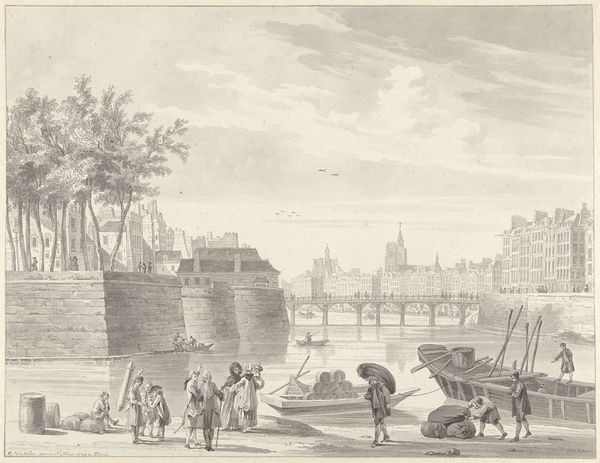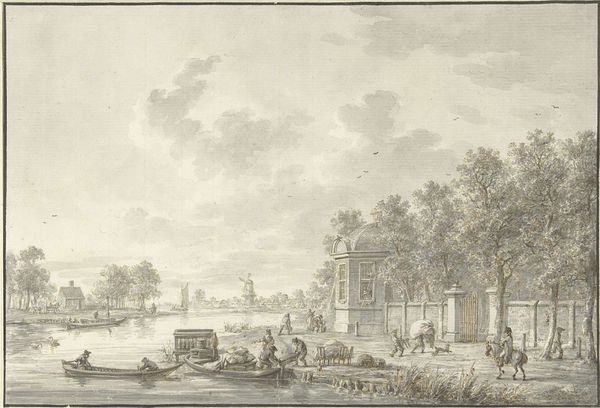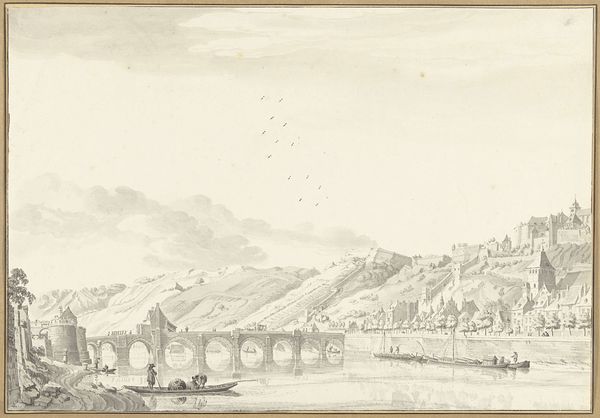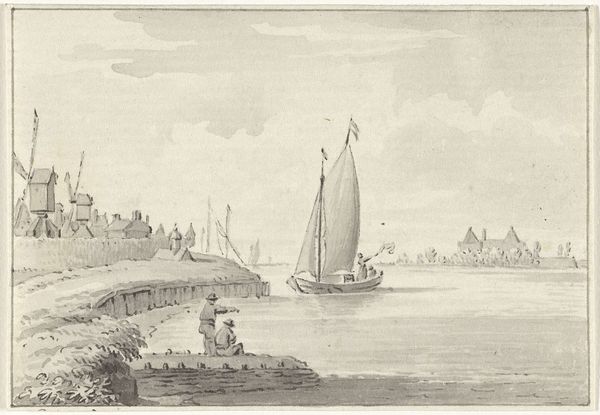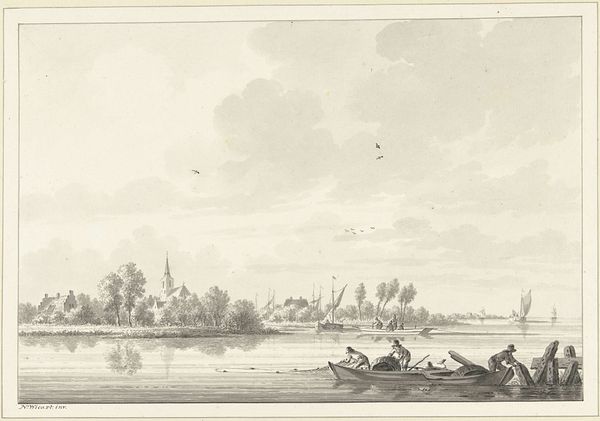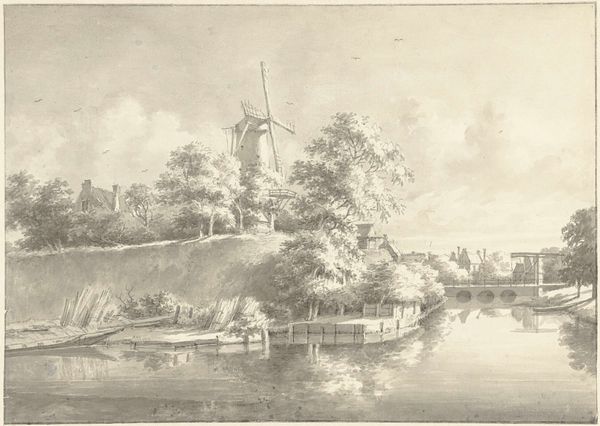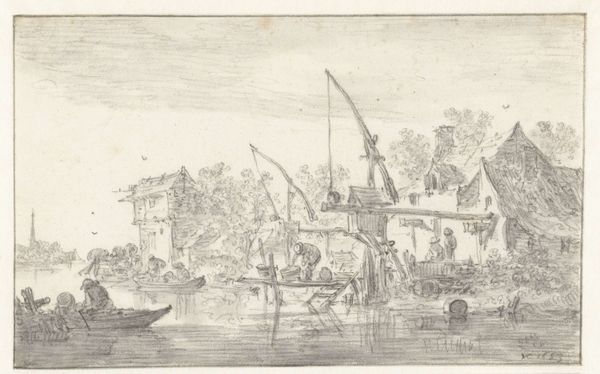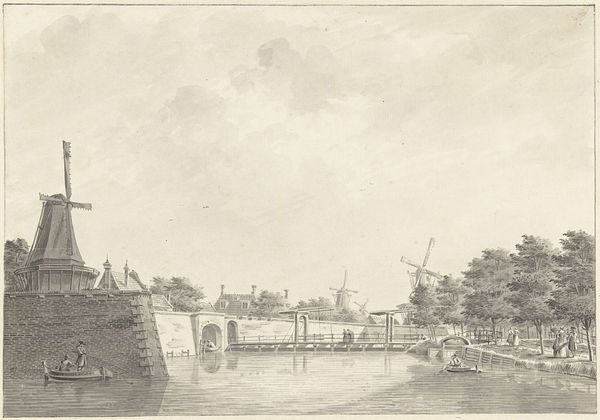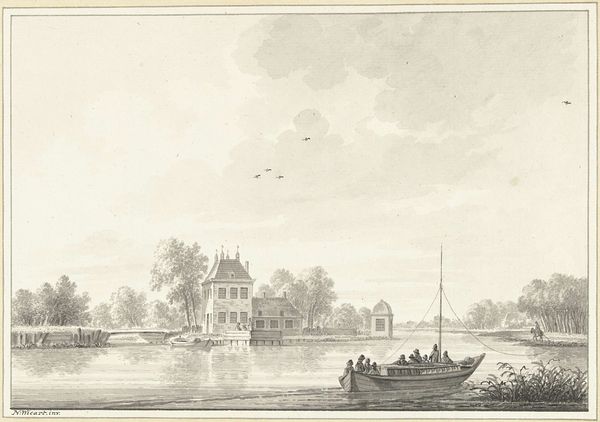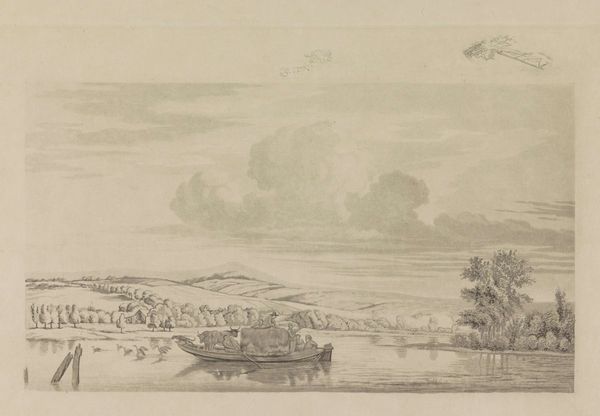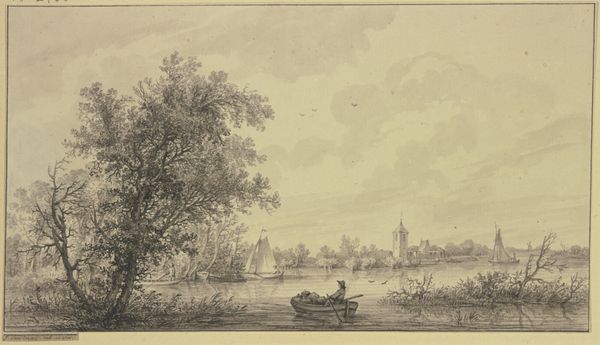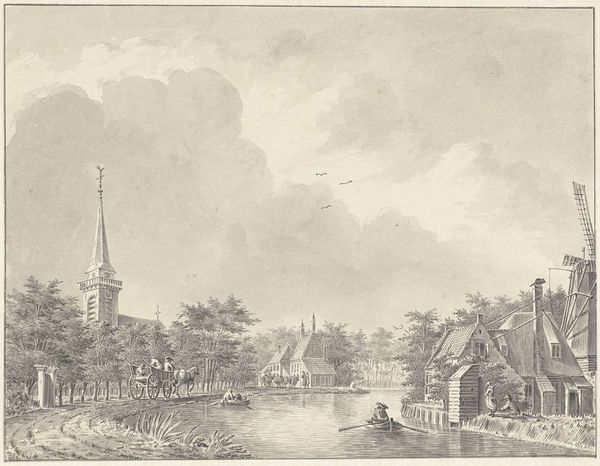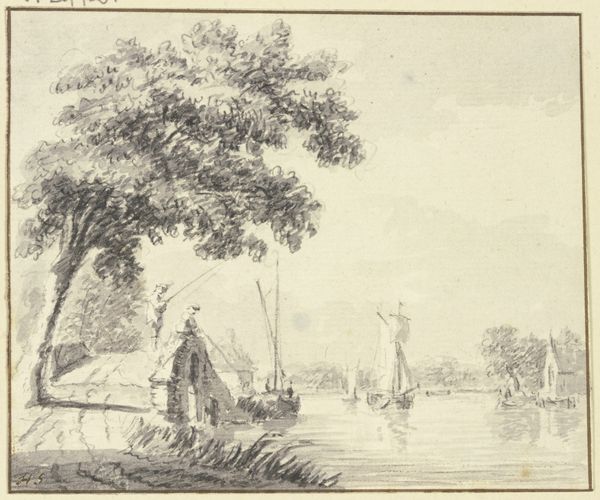
drawing, etching, ink, pencil
#
drawing
#
dutch-golden-age
#
etching
#
landscape
#
ink
#
pencil
Dimensions: height 119 mm, width 176 mm
Copyright: Rijks Museum: Open Domain
Pieter de Goeje sketched this Dutch landscape with pen and brush in the 1800s. Look closely and you'll see windmills peppering the horizon—symbols of Dutch ingenuity. Windmills, historically, have been powerful emblems of progress, appearing across cultures from Persia to Europe. Here, they're more than just functional; they signify the Dutch spirit of transformation, turning wind into energy, shaping the landscape to their will. Consider how this symbol of adaptation is echoed in other traditions. The wheel, for example, in Buddhism represents the endless cycle of life, death, and rebirth, perpetually turning. It’s like the windmill—ever in motion, evolving, its cultural significance shifting with each turn. Observe the emotional undercurrent in this seemingly simple scene. The recurring image of transformation engages our collective memory, stirring something deep within our psyche. The windmills connect us to our shared human narrative of innovation.
Comments
No comments
Be the first to comment and join the conversation on the ultimate creative platform.

